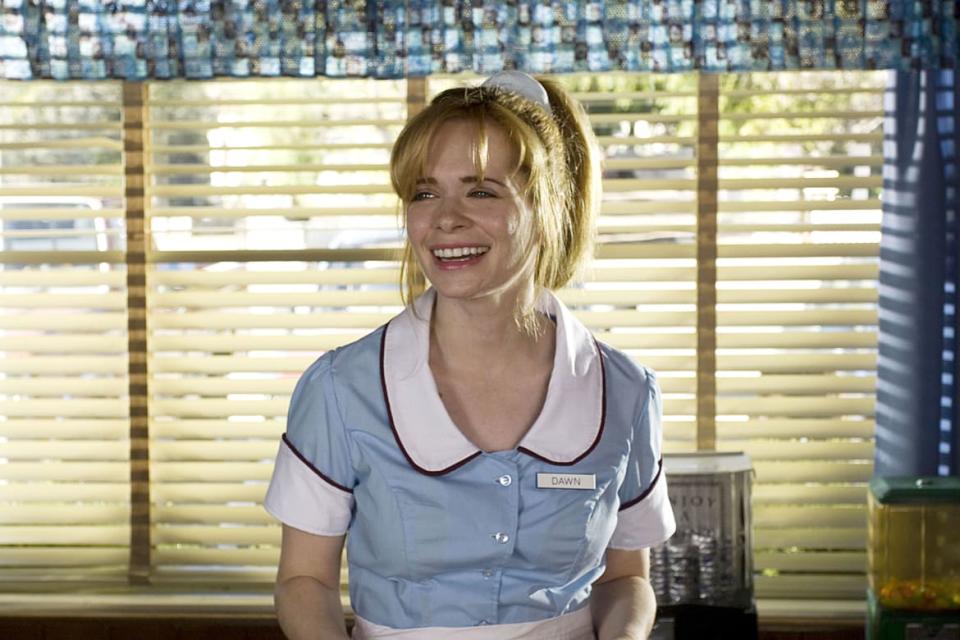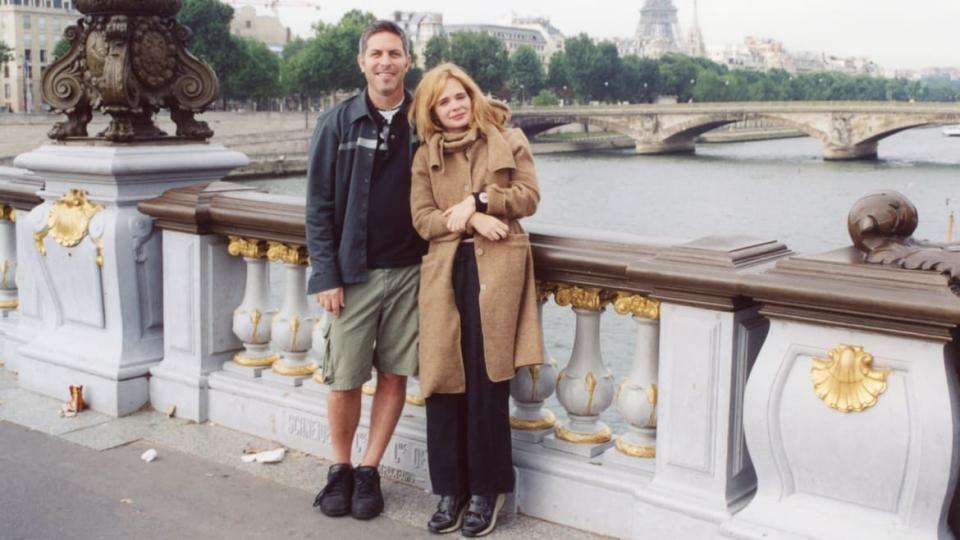Remembering Adrienne Shelly, the Feminist Filmmaker Murdered in Her New York City Apartment

- Oops!Something went wrong.Please try again later.
- Oops!Something went wrong.Please try again later.
Adrienne Shelly was an actress, a director, a mother, a wife, and a friend, and her life was cut terribly, unthinkably, unjustly short on Nov. 1, 2006, when 19-year-old construction worker Diego Pillco broke into her apartment with intent to rob her and, upon being discovered by Shelly, fatally strangled her and then hung her in the bathroom in an attempt to make it appear that she’d committed suicide. Those are the gruesome details of Shelly’s death, and they’re not shied away from in Adrienne, a new documentary premiering on HBO on Dec. 1 following its debut at the DOC NYC festival on Nov. 14. Yet as directed by her husband, Andy Ostroy, this non-fiction remembrance is less about the horrors of Shelly’s final day than about the inspiring brightness of her life—and, also, the tremendous grief wrought by her untimely demise.
Netflix’s ‘Procession’ Shines a Light on the Horrors of America’s Pedophile Priests
Ostroy serves as the on-screen narrator of his late wife’s story in Adrienne, turning the film into both an act of grappling with perversely arbitrary tragedy and a celebration of her many roles. The most public of those was as a rising star, as Shelly made an instant indie-cinema name for herself in Hal Hartley’s The Unbelievable Truth and Trust. Those lead parts were showcases for her vivacious personality and determined toughness, the latter of which shone through despite the fact that she was pretty and petite (standing only 5' 2") and thus, easily objectified by film industry chauvinists as a dainty sexpot in need of manly protection. Not content with simply being an actress, however, Shelly—after a series of less-than-fulfilling projects—quickly gravitated to working behind the camera, peaking with 2007’s Waitress, which became a Sundance hit a couple of months after her death.

Adrienne Shelly in Waitress
Waitress has continued to have an amazing life of its own as a popular Broadway musical, and early in Adrienne, Ostroy asks patrons waiting to enter the theater if they know his wife. That they don’t recognize her name (even though it’s on the marquee) is merely another in a long line of pointed jabs suffered by Ostroy, and underscores his own motivation for making this documentary: namely, to maintain her memory and, in doing so, to provide her with the acclaim and respect she deserved. To that end, he presents numerous clips from Shelly’s films and self-directed shorts, behind-the-scenes footage from her productions, photos of her on stage, interview snippets from the 1990s, and never-before-seen home movies, confessional recordings, and scenes from a still-in-the-works documentary she was making in and around NYC about the quest for—and nature of—happiness.
In those archival moments, Adrienne captures the joy that Shelly brought to every professional venture she undertook and the euphoric delight she felt for her daughter Sophie, who was only 3 at the time of her death. Now a teenager, Sophie joins her father in speaking candidly about Shelly’s absence, as do Shelly’s mother, friends, and famous collaborators, all of whom still seem stunned—and devastated—by her unimaginable fate. From Keri Russell and Paul Rudd to Jeremy Sisto and Hal Hartley, colleagues are effusive about her talent, with her The Unbelievable Truth co-star Robert Burke stating, “She was a complete unicorn, as far as I was concerned.” They also have high praise for the courageous feminist attitude that she brought to all her endeavors, notably Waitress, which was ahead of the #MeToo curve, and whose second life in musical form stands as a testament to the universal appeal of its forward-thinking spirit.
Adrienne’s tribute to Shelly constantly feels as if it’s being delivered through teary eyes, and that culminates with the film’s showstopping final passage, in which Ostroy visits Pillco in prison to understand what really took place on that appalling November day and why, and also to show the killer precisely what he stole from everyone. Through a translator, a seemingly repentant Pillco explains how his robbery of Shelly’s apartment—a frequent practice of his, since he was deep in debt—turned homicidal when the actress caught him mid-theft and attempted to call the police (Pillco was an undocumented immigrant from Ecuador). Ostroy and Pillco’s encounter is predictably wrenching, for us as well as for Ostroy, who forces Pillco to look at photos of his wife—with himself, and with young Sophie, including a snapshot taken on Oct. 31, 2006, the day before her murder—and then, overcome with anguish, cuts off the chat.
Shelly’s death was senseless and stupid, and Adrienne doesn’t try to imbue it with undue “meaning.” Rather, it accepts it as a crime that’s left a gaping hole in the filmmaking community and, more heartbreakingly, in the home of Ostroy and Sophie, who’ve soldiered on with the help of loved ones and Ostroy’s three children from a prior marriage, one of whom reacted to Shelly’s killing by immediately moving in with Sophie and taking her under his wing. Ostroy animates notes from conversations that he and a very young Sophie had about Shelly’s death, highlighting the awfulness of reckoning with calamity as a child and as a parent. In present-day chats, they provide no conclusive answers to coping with their situation, instead giving voice to the lingering pain and sorrow that’s now become a regular (if not, in certain respects, defining) aspect of their existence.

Adrienne Shelly and her husband Andy Ostroy in Adrienne
That unresolvable torment is ultimately the most resonant chord struck by Adrienne. No matter how much Ostroy valiantly tries to turn his documentary into an uplifting memorial, he can’t escape the sadness of his spouse’s tale, and that’s to the proceedings’ benefit. There’s an honesty to the film’s forthright recognition that closure and healing are just words designed to suggest fantasies of recovery that can’t ever be fully realized; the scars of losses like this run so deep, and shape lives so profoundly, that they’re always there, coloring one’s thoughts and actions. Ostroy and Sophie seem at peace with the understanding that what was taken from them can never be regained, and that they’ve become fundamentally different people because of it, and it’s in that honest portrait of catastrophe and its lingering aftermath that Adrienne makes its own admirable mark.
“Adrienne” premieres on HBO on Dec. 1.
Get our top stories in your inbox every day. Sign up now!
Daily Beast Membership: Beast Inside goes deeper on the stories that matter to you. Learn more.

